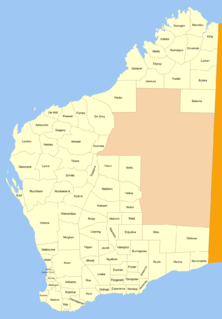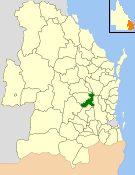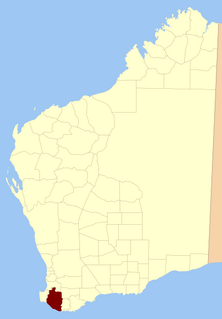
Gascoyne Land Division was a land division of Western Australia defined under the Land Regulations of 2 March 1887. It included almost all of the modern Gascoyne region of the State. In the Land Act 1898, it was renamed Western to avoid confusion with the Gascoyne Land District which had just been created by the Department of Lands and Surveys, [1] and on 1 February 1907, section 26 of the Land Act Amendment Act 1906 merged it into North-West Land Division.
The lands administrative divisions of Western Australia refer to subdivisions of the state of Western Australia for cadastral purposes, most of which have been in place since the 19th century. The state is divided up for this purpose into five land divisions, which in turn are subdivided into land districts, which correspond to counties in other Australian states. These districts are then subdivided further into numbered locations, as well as gazetted townsites. Together, they form part of the lands administrative divisions of Australia.

Western Australia is a state occupying the entire western third of Australia. It is bounded by the Indian Ocean to the north and west, and the Southern Ocean to the south, the Northern Territory to the north-east, and South Australia to the south-east. Western Australia is Australia's largest state, with a total land area of 2,529,875 square kilometres, and the second-largest country subdivision in the world, surpassed only by Russia's Sakha Republic. The state has about 2.6 million inhabitants – around 11 percent of the national total – of whom the vast majority live in the south-west corner, 79 per cent of the population living in the Perth area, leaving the remainder of the state sparsely populated.

Gascoyne Land District is a land district of Western Australia, located within the North-West Land Division.
It was defined thus in the Land Regulations in 1887: [2]
| “ | Bounded on the south by the Murchison River, from its mouth at Gantheaume Bay upwards to Bompas Hill at the Great Northern bend of said River, thence south-easterly along the eastern boundary of the South-West Division, and thence by an east line to the 119th meridian of east longitude from Greenwich, passing through a spot ten miles south of Mugga Mugga Hill; on the east by a north line along the aforesaid 119th meridian of east longitude; on the north by a west line to the seacoast, passing through a spot thirty miles south of Mt. Alexander on the Ashburton River; and on the west by the sea-coast, including all Islands adjacent. | ” |








